Snakes! Maybe it’s a biblical Adam and Eve thing but snakes engender a ripple of dread in most people. For some it’s Ophidiophobia which is more than a ripple – rather a completely irrational fear of snakes.
Snakes really aren’t that frightening. They have very little to protect themselves – no legs, no claws, they can’t fly or run, they are generally quite small and they’re scared of us. Unless you attack one or accidentally step on one, they are keen to get out of your way.
Most of us have come to accept the sight of the Diamond python lazing in our backyards or dwelling in our roof cavities. They can sit motionless for days on end, waiting for an opportunity to strike at a meal and then slowly move on to another location only a hundred yards from the first. Their diet consists of rodents, possums, birds and lizards and sometimes, although rarely, the small dog, cat or baby wallaby.
While they are docile and not inclined to bite, if harassed, they can bite hard. They are non-venomous but sometimes a tooth breaks off in the wound. If you’re bitten by one, the main concern is cleaning the wound to prevent infection. Then, make sure the snake didn’t leave a tooth behind.
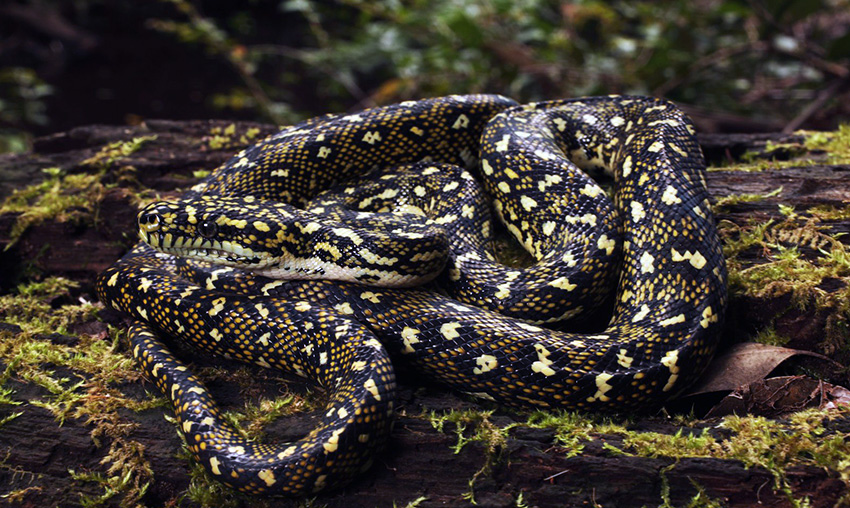
The Green Tree Snake is usually green but may also be black, blue or yellow and are expert at camouflaging themselves on trees. These snakes are harmless to humans, they have no venom and are not aggressive. They live in rainforests, open forests and rural areas and can be found in urban gardens.
Green tree snakes are active by day and feed on frogs, fish and small reptiles. They have large eyes and keen eyesight. They rest at night in hollow trees, logs, foliage, rock crevices and other sheltered areas.
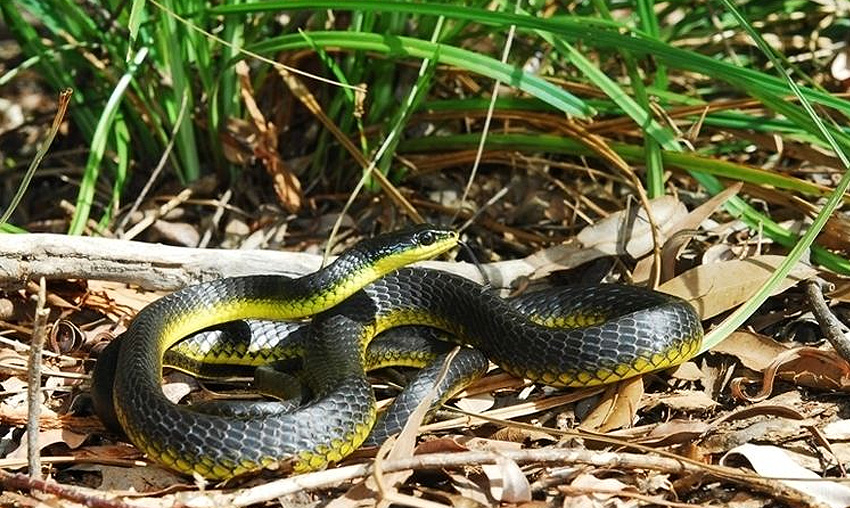
And now to the venomous ones!!
The Red Bellied Black Snake has a shiny black back with bright red sides, usually becoming yellowish towards the centre. It is found near creeks, swamps and sometimes swimming pools; usually under rocks and logs, and sometimes lying in the sun in garden beds. Its average length is 1.2m. They eat rats, mice, frogs, lizards, snakes and birds as well as fish and eels. It is has been known to eat other snakes, including the dangerous eastern brown snake.
Although venomous and capable of inflicting a possibly fatal bite, these are shy snakes and will do their best to get out of your way. There are no recorded deaths of bites from this snake. If you get bitten call an ambulance.
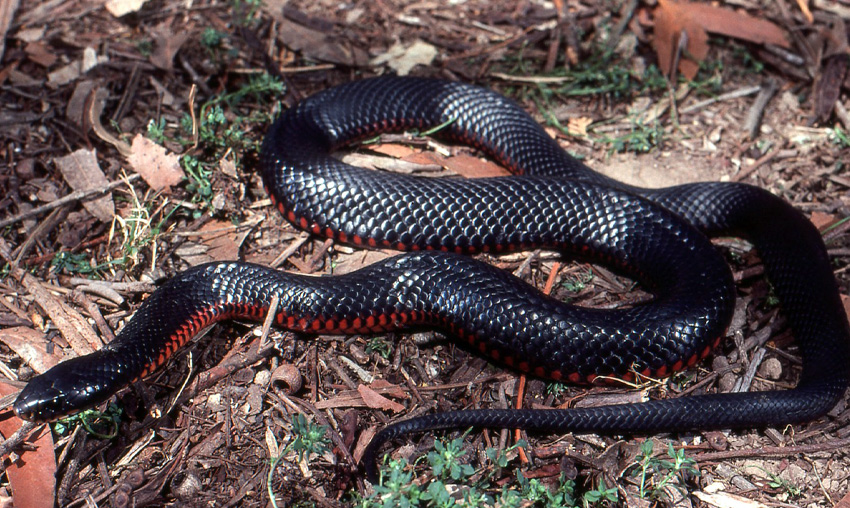
The Eastern Brown snake is a medium sized snake, with a slender to moderate build and a smallish head barely distinct from the neck. They inhabit open landscapes such as woodlands and scrublands. Body colour may be almost any shade of brown, ranging from near black to light tan, chestnut or burnt-orange.
Brown snakes hunt by actively looking for prey and searching in likely hiding places. They have good eyesight and once prey is detected they will give chase and subdue the prey using both venom and constriction. Eastern Browns are mainly diurnal hunters however during very hot weather they may delay foraging until late in the afternoon / early evening.
Because the Eastern Brown Snake can cope and even thrive in areas of human disturbance, its natural range can include some of the most populated parts of the country including the Western Foreshores and for this reason this species is probably encountered more than any other type of snake. Being an alert, nervous species they often react defensively if surprised or cornered, putting on a fierce display and striking with little hesitation. However, if approached over a distance, they will usually choose to flee or else remain stationary, hoping to avoid detection.
When confronted by an intruder, the Eastern Brown displays one of two forms of threat. In the mild threat, the snake raises the head and anterior part of the body slightly off and parallel to the ground, with the neck spread laterally and slightly hooked but the mouth closed. In this posture, the snake faces the threat side on. If issuing a strong threat, the snake raises the anterior part of the body well off the ground in an s-shaped coil and with the mouth slightly open, ready to strike – in this posture, the snake faces the threat more squarely. The common feature of both displays is the spreading of the neck, and this behaviour precedes most bites.
Relative to other similar-sized elapids the fangs of the Eastern Brown are quite small (around 3mm), as is the average venom yield (around 4mg, although the record venom yield was 67mg). However what the snake lacks in venom delivery it makes up for in potency. The venom contains powerful presynaptic neurotoxins, procoagulants, cardiotoxins and nephrotoxins, and successful envenomation can result in progressive paralysis and uncontrollable bleeding. Occasional fatalities have occurred as a result of bleeding into the brain due to coagulation disturbances (consumptive coagulopathy).
As the initial bite is generally painless and often difficult to detect, anyone suspected of receiving a bite from an Eastern Brown Snake should call for medical attention without delay. This species has the unfortunate distinction of causing more deaths from snake bite than any other species of snake in Australia. Many bites have been a direct result of people trying to kill these snakes and could obviously have been avoided.
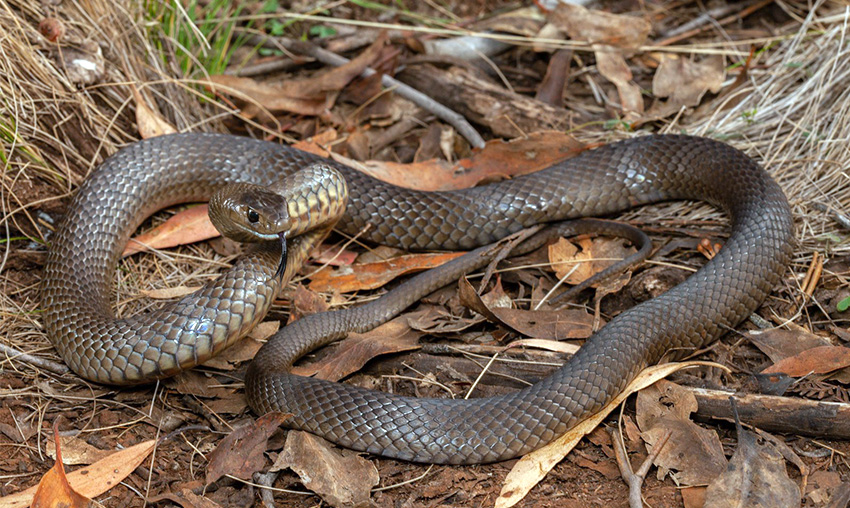
There are several species of death adders in Australia but the Common Death Adder is the only one found in the Sydney region. It’s easily recognised by its triangular-shaped head, short stout body and thin tail.
The Common Death Adder feeds on frogs, lizards and birds and, unlike most Australian venomous snakes that actively search for prey, this snake sits in one place and waits for prey to come to it. Covering itself with leaves makes it inconspicuous and it lies coiled in ambush, twitching its yellowish grub-like tail close to its head as a lure. When an animal approaches to investigate the movement, the death adder quickly strikes, injecting its venom and then waiting for the victim to die before eating it.
Death adders have relatively large fangs and toxic venom and, before the introduction of antivenom, about 60% of bites to humans were fatal.
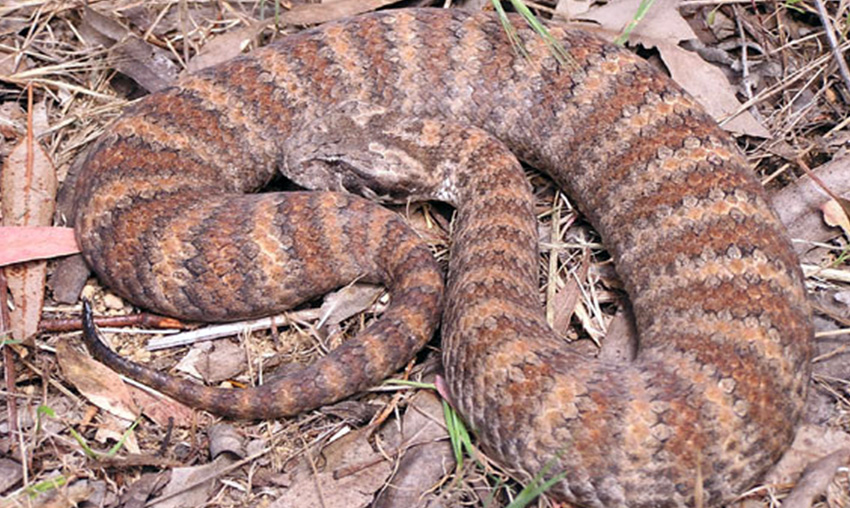
What to do
Simple precautions, such as wearing long pants, thick socks and solid footware when working or exploring outdoors greatly reduces the risk of being envenomated should there be a close encounter with a startled snake.
Living offshore it pays to be armed…with knowledge about these wonderful reptiles.
To find out what to do in case of snake bite – click on this link.
Listen to this ABC “Conversations” Podcast – the Secret Life of Snakes
Story by Pru Colville
Source: The Australian Museum.
